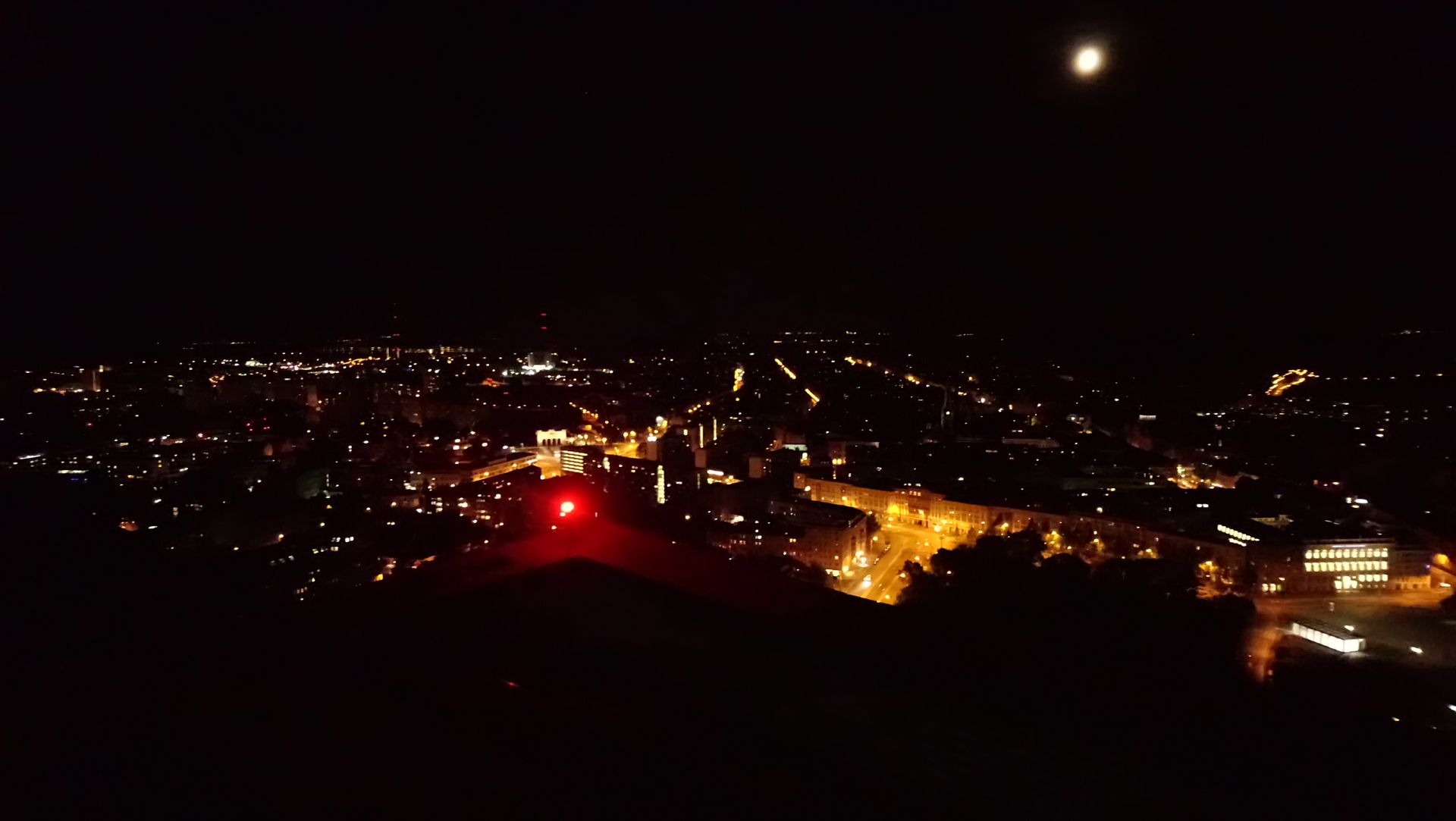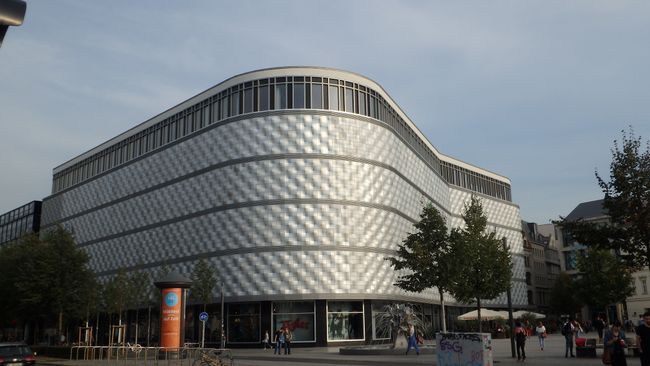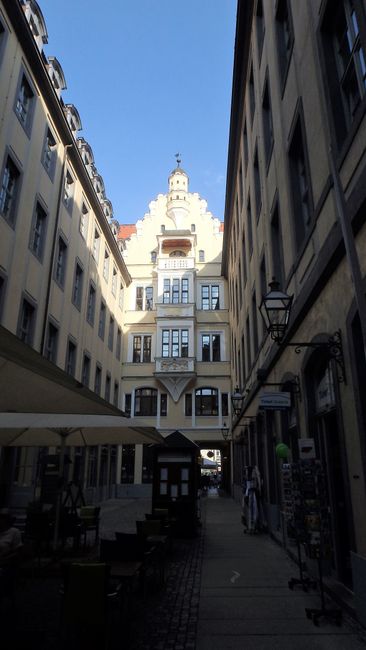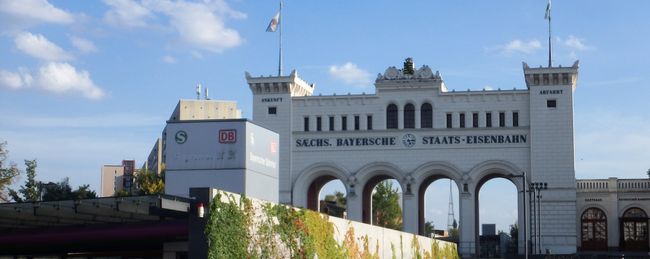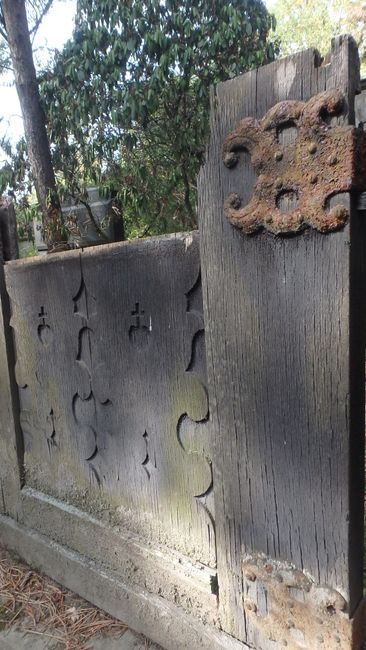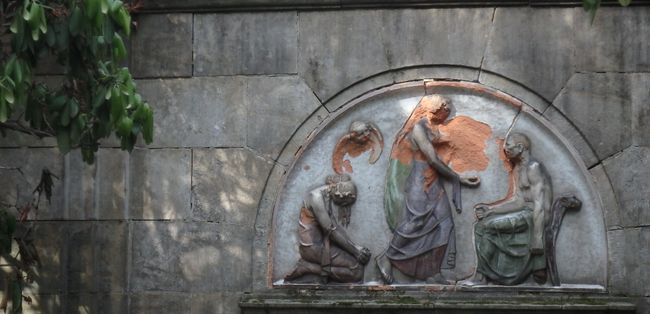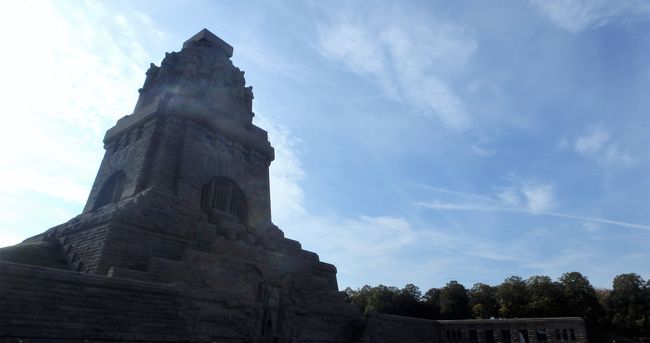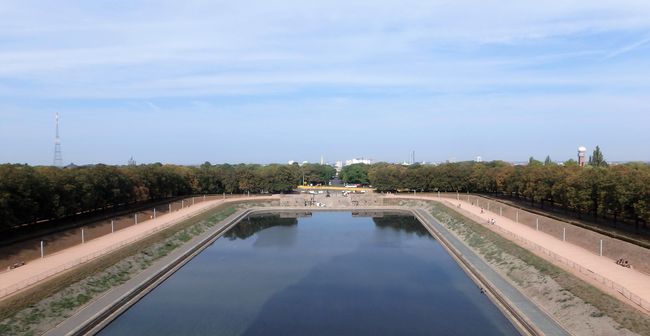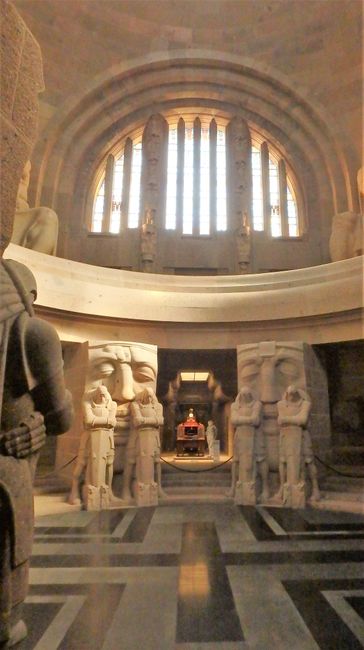Day 4 of discovery (20/09/2018)
Публикувано: 20.09.2018
Абонирайте се за бюлетин
My goals for today were:
· Monument to the Battle of the Nations
· South Cemetery
· Auerbachs Keller
For the first goal, I would like to tell you what I as a hobby historian have to say, namely:
1812 in the Battle of Leipzig led by Napoleon Bonaparte, thousands of soldiers fought bloody battles on a large square against the Austrians and Russians. The population of Leipzig suffered with severely wounded and dead, who had to overcome or endure their everyday lives through bloody street fights.
In 1813, an obelisk was supposed to be the monument of the battle, but the population of Leipzig resisted and wanted to honor their dead in a more worthy way.
Therefore, a fast process was carried out with the Leipzig city council and the architects Thieme and Schmitz were allowed to undertake the honorable project.
It took many years for this monument to be built. 26,500 granite porphyry blocks and 12,000 cubic meters of concrete were used. The blocks were painstakingly carved into beautiful statues by stonemasons. During the Weimar Republic, the monument grew in height and Wilhelm II inaugurated this monument ceremoniously.
3-4 generations worked on this monument.
During the years of National Socialism, Hitler used this monument for his propaganda, mass delusion, and for demonstrations against other countries.
During World War II, the monument was bombed to ruins by both the Allies and the Germans alike.
After the Second World War, when the Soviets captured Leipzig, the monument was condemned to "fall apart". It was assumed that the Germans wanted to recognize their national heritage again and that old times would return.
I do not want to know what the two architects would have thought when they heard about these events.
The GDR regime also continued to leave this monument uncared for. It was used as a symbol of the great show of power between Russia and the GDR.
There was a lack of financial contribution to renovate this monument and keep it standing.
After the reunification, financial aid came together and the endangered monument could be renovated or rebuilt with joint efforts.
2013 was the 200th anniversary of the Battle of Leipzig. During the festivities, a charity concert was organized to raise necessary funds for the renovation costs.
Until today, the monument is a symbol of peace, but it is also an architectural masterpiece of its time.
Today, you can take elevators up to the viewing platform, but the last steps to the almost 91m must be taken on foot.
I would recommend wearing good shoes and being physically fit.
I myself felt how exhausting the steps were.
You can almost compare this to the staircase to the viewing platform of the Ulm Minster. But the advantage over the Ulm Minster is that the steps are a closed spiral staircase that gets narrower.
From the viewing platform, you have a beautiful panorama of Leipzig.
I was able to filter out the research about this monument alone through a very good film about the monument. This film is shown on the 1st floor.
If you want to learn more about the monument, do not be ashamed to do some research before your visit.
The Pharmacy Museum of the Saxon Pharmacists Association near the Thomanerkirche is a real treasure trove for the curious or future PTA. It tells the story of the Saxon Pharmacists Association and general information about pharmacology.
If you find old bottles in your pharmacies' shop windows, pay attention to the labeling.
The color of the labeling has special characteristics, namely:
· White writing on a black background = store very carefully, but the raw material is also toxic. The more "pulses" there are, the more life-threatening it is.
· Red writing on a white background = store carefully, but this raw material can also be life-threatening.
· Black writing on a white background = can be stored normally, but this raw material is harmless to humans.
Back then, most of the labeling was done by hand with enamel paint. In the later years of the 19th century, signboards were invented to introduce standardized designations.
You can imagine the labeling as stamp printing. A board was placed on the label and then dabbed with black printer's ink.
There were also special labelings, namely the cut engraving. This was only allowed for special pharmacies.
It not only tells the history of the pharmacy, but also the history of medications, such as:
· Sleeping pills:
Choral hydrate was used as a sleep / sedative. Later, the drug barbiturate (Veronal) was introduced to the market. This was abused as a suicide drug in the 1960s.
· Later, the company Bayer introduced the drug Luminal to the market
A very shocking drug was thalidomide, among others, Contergan. Originally, it was administered during pregnancy as a sedative, but it turned out that the children suffered from malformations. There was a huge lawsuit by affected mothers.
Later, other drugs were introduced to the market, namely Librium, Diazepam, Faustan, and Valium.
The stimulants, also called amphetamines among doctors, are still drugs to this day. In Hitler's Germany, the stimulant "Pervitin" was distributed among the Wehrmacht. It was supposed to suppress fatigue and keep combat readiness high.
The first stimulant called ephedrine, was isolated from the mormon tea and was supposed to be used against chronic asthma, but it turned out that the patients stayed awake.
The manufacturing of pills and extracts was still purely artisanal work back then.
The powder was pressed into brass raw bodies and the fever suppository was ready.
Extracts were produced with an infusion table. You can imagine it like this:
There was a large brass table with three large infusion jars. In three more small jars, the extract of drugs was filtered. Everything was done with hot brew.
Homeopathy in Leipzig has a centuries-old history.
Among other things, pharmacist Dr. Wilhelm Schwabe was responsible for spreading homeopathy (healing art with natural plant substances) all over the world. The central office for the German Homeopathy Union (DHU) is located in Karlsruhe.
There is also a Dr. Schwabe work in Karlsruhe in Durbacher Str. (near the S-Bahn station Durbacherstr.)
The South Cemetery in Leipzig is a really beautiful cemetery. The mix of new and old makes the cemetery something special.
As a dark romantic, I can imagine more. *grins*
The cemetery itself has its own crematorium.
Unfortunately, I passed by, but I will catch up and report on it.
A spontaneous trip went to the Nikolaikirche. (Nikolaistrasse)
In both wars, this church was leveled to the ground and later rebuilt. It was also the place for Monday prayers during the GDR regime. The motto of the church was: Create peace without weapons.
People who participated in the prayers always had a candle with them. This symbolized that no danger came from humans. The light is a sign of peace, but also inside the church, peace symbols are combined in the neoclassical architectural style, namely the palm tree.
In the nave, there is a candlestick with 40 candle holders. This signifies that the population was under captivity of the GDR for 40 years and also other events related to the number 40.
I myself lit a candle to show my solidarity with the GDR citizens. For a small additional fee (2€), you can take photos inside the church. However, it is ensured that these pictures are only shown for private use.
There is also the organ with more than 500 organ pipes and the Porsche playground in this church.
As usual in every church, the suffering of Christ is shown in frescoes.
BUT: the Nikolaikirche is not Catholic, but Protestant. During the Reformation, which strongly affected the Saxon region, saints' pictures were banned from the churches, as the intention was to encourage people to make up their own minds.
My conclusion for today was the Mephisto Bar in the Mädler Passage. If you want to enjoy a cocktail in the evening, you won't be disappointed there.
Абонирайте се за бюлетин
Отговор
